#Our Lady of Mother of Perpetual Help
Text

Our Lady of Perpetual Help
Feast day: June 27
Patroness of the Republic of Haiti and Almoradi, Spain
Our Lady of Perpetual Help, also known as Our Lady of Perpetual Succour and Our Mother of Perpetual Help is the title given to a 15th-century icon that originated in the Keras Kardiotissas Monastery and has been in Rome since 1499. Due to the promotion of the image by the Redemptorist Priests since 1865 many reproductions have been made and venerated.
Here is a list of the meaning of some of the elements of the icon:
• Mary’s eyes, filled with compassion and love, are directed toward us.
• Our Lady is clothed in the colors of virgins (red) and of mothers (blue). These are also royal colors.
• The star on Mary’s veil reminds us that she is the dawn announcing the coming of Christ.
• The Christ Child grasps his mother’s hand as though he is frightened by what he sees.
• In His hurry to reach his mother, Jesus has almost lost one of his sandals. He became human, like us, in all things but sin.
• On Our Lady’s left and right, we see the reasons for the child’s fear. On the right is the Archangel Gabriel, holding a cross and four nails. On the left is the Archangel Michael, holding a lance and a gall-sop of Christ’s Passion. This vision of the instruments of the crucifixion has driven the young Jesus to his mother’s protective embrace.
Prints, plaques & holy cards available for purchase here: (website)
#artist on tumblr#catholic art#Catholic illustrations#Our Lady of Perpetual Help#blessed mother#blessed virgin mary
112 notes
·
View notes
Photo

THE DESCRIPTION OF THE OUR LADY OF PERPETUAL HELP
Feast Day: June 27
The icon of Our Lady of Perpetual Help represents the Christian mystery of Redemption.
Our Lady of Perpetual Help is a Byzantine icon that is believed to have its origin sometime during the 13th -15th century. The image is also known as 'Our Lady of Perpetual Succour.' The icon is known for being miraculous; over the centuries countless healings and special graces have been attributed to it, so much so that the image has been honored and venerated by many Popes.
The miraculous icon is painted on wood and measures about 20" in height (54 x 41.5 centimeters) and depicts the Virgin Mary, under the title 'Mother of God,' holding the Child Jesus.
The Archangels Michael and Gabriel, hovering in the upper corners, hold the instruments of the Passion. St. Michael (in the left corner) holds the spear, the wine-soaked sponge, and the crown of thorns. St. Gabriel (in the right corner) holds the cross and the nails.
The intent of the artist was to portray the Child Jesus contemplating the vision of His future Passion. Frightened by the vision, he runs to his mother for consolation. The anguish He feels is shown by the loss of one of His sandals as he quickly flees into the arms of his Mother.
Despite a foreboding vision of suffering, the icon also conveys the triumph of Christ over sin and death, symbolized by the golden background as a sign of the glory of the resurrection. The royal crowns on the heads of Jesus and Mary also symbolize their triumph as the King of Kings with his Queen Mother.
In a very beautiful way, the Child Jesus grasps the hand of the Blessed Mother. He seeks comfort from His mother as He sees the instruments of His passion. The position of Mary’s hands – both holding the Child Jesus (who seems like a small adult) and at the same time presenting Him to us – convey the reality of our Lord’s incarnation, that He is true God who became also true man.
Just as the Child Jesus fled into the arms of his Mother when he was frightened, so too do we flee into the arms of our Blessed Mother with child-like confidence whenever fear envelopes our hearts. Just as the Virgin Mother consoled and comforted her Divine Child, so too does she console and comfort us, her spiritual children, in our afflictions. We can always come to her in our time of need and receive her help.
In this iconography, Mary is represented as the one who guides us to the Redeemer. The Virgin Mother is also our Help who intercedes with her Son on our behalf. The star painted on Mary's veil, centered on her forehead, highlights her role in the plan of salvation as both the Mother of God and our Mother.
To this day, the Church of St. Alphonsus in Rome displays the original icon of Our Lady of Perpetual Help. They are the guardians and promoters of the holy icon, the only religious order entrusted with the task of doing so with a venerated image of Our Lady.
Source: The Catholic Company
#random stuff#catholic#feast day#our lady of perpetual help#our lady of perpetual succour#our mother of perpetual succour#nostra mater de perpetuo succursu#nuestra señora del perpetuo socorro#virgen del perpetuo socorro#ina ng laging saklolo#redemptorists
47 notes
·
View notes
Text
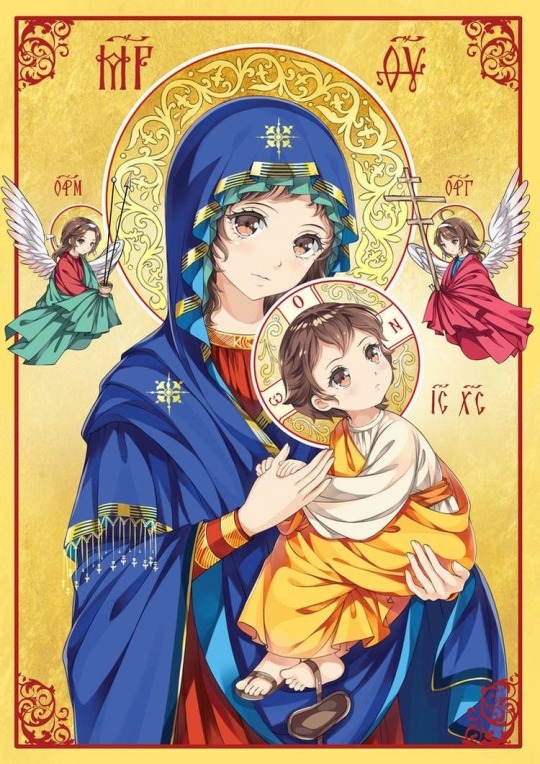
𝑶𝒖𝒓 𝑳𝒂𝒅𝒚 𝒐𝒇 𝑷𝒆𝒓𝒑𝒆𝒕𝒖𝒂𝒍 𝑯𝒆𝒍𝒑 𝑷𝒓𝒂𝒚 𝒇𝒐𝒓 𝒖𝒔.
#jesus#catholic#my remnant army#jesus christ#virgin mary#faithoverfear#saints#jesusisgod#endtimes#artwork#Mother Mary#our lady of perpetual help#pray for us#rosary#Jesus is coming#feast day
29 notes
·
View notes
Text

11 notes
·
View notes
Text
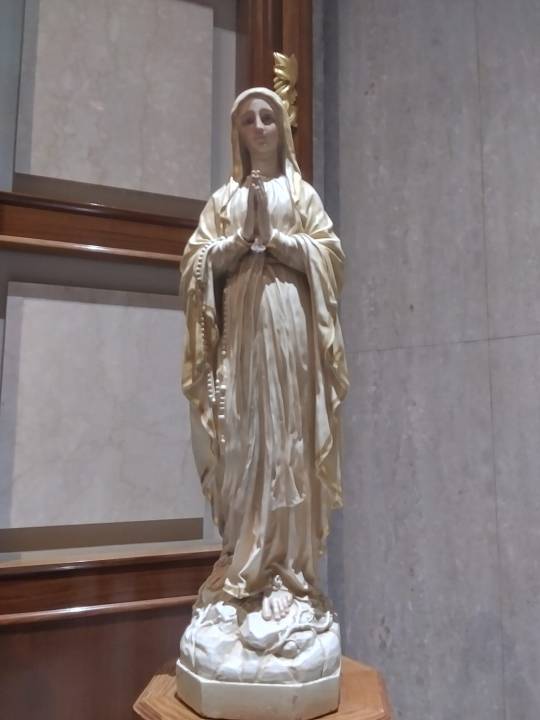
And Mary kept all these things, reflecting on them in her heart. (Luke 2:19)
0 notes
Text
A Tale of Two Disguises: Fairy Tale Motifs in Bridgerton Season 3 (Part 1)

It’s Polin Season! In the midst of this Friends to Lovers renaissance and rewatching the Carriage Scene™ for the 847,000th time, I find that I MUST give the fairy tale meta treatment to our beloved Bridgertons. Not only did the show explicitly relate its central couple to the Eros and Psyche myth, but there are a number of other fairy and folk tale motifs scattered throughout the season.
While we only have the first four episodes so far (Shonda, you cruel, cruel tease!), it seems clear that the theme of the season is disguise. Our leading man and lady have both put on masks to protect them from society, but those are slowly being peeled away as they draw closer together. I would argue that aside from Cupid and Psyche (ATU 425), the story also relies heavily on Cinderella (ATU 510), both romances in which the true self is revealed.
To begin with, Colin arrives back in town with a flirtatious new swagger, but apparently no intent to actually court a mate. In this way, he is very similar to the mythical Cupid, who is described as:
“that winged lad, the naughty child who has been so spoilt that he despises all social restraint. Amed with flames and arrows he flits in the night from house to house. He severs the marriage-tie on all sides; and unchastised he perpetuates endless mischief.”
Now I hear you, you’re saying that sounds nothing like Colin! And yes, but the point is that he has no qualms about flirting with one lady after another (or bedding prostitutes), metaphorically slinging Cupid’s arrows everywhere he goes, because that is the role he believes he must perform. The point of his character in Apuleius’ narrative is that Cupid has power over gods and men, to make them fall in love with one another, but he himself is never prey to such feelings.
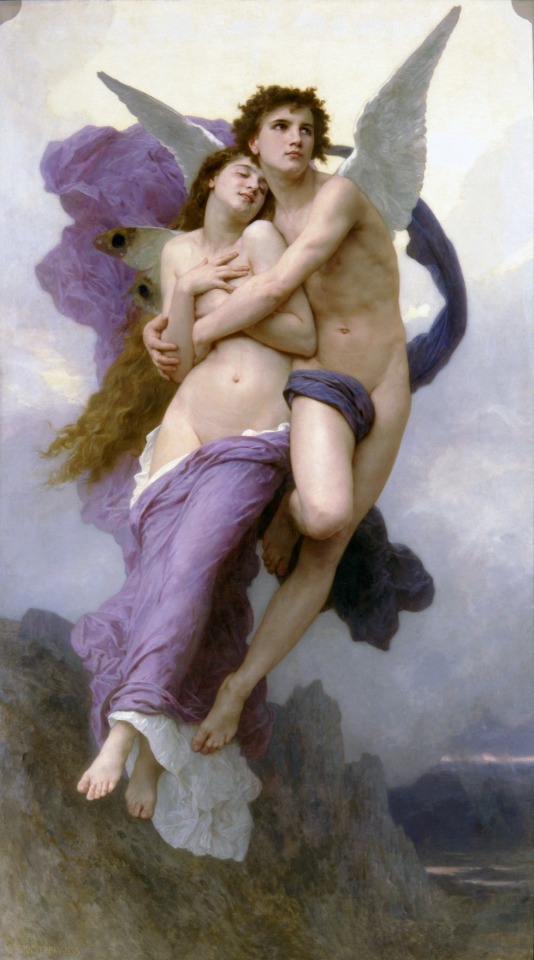
UNTIL. His mother, Venus, tells him to make the beautiful Psyche fall in love with a monster. In some versions, simply the sight of Psyche is enough to make Cupid fall in love. In others, he accidentally pricks himself with his own arrow when he sees her, thus becoming the victim of his own schemes.
Similarly, Colin agrees to help Penelope find a husband, but soon finds that he himself has fallen in love with her. There is even a subtle reference to this when he gifts Gregory the bow and arrows. In the shot, Gregory turns with the bow pointed directly at Colin. He is in the sights of Cupid’s bow, about to be hit with his own weapon!
Once Cupid has fallen for Psyche, she is borne upon the wind to his palace, where she is served by invisible servants and her new husband visits her only in darkness when she cannot see him. By these means, he keeps his true identity hidden, leading Psyche to eventually question whether she has indeed married a monster. In her fear, she brings an oil lamp to his bed, and when she sees that he is in truth the handsome god Cupid, she accidentally drops hot oil onto him. Thus injured, her husband awakes into the realization that she has betrayed his confidence and uncovered his identity.
Similarly, Colin is concealing his true self behind the mask of the rake, hiding his desire for emotional intimacy even from Penelope. Not easily fooled, she writes as Lady Whistledown questioning whether this is in fact his true self. Once their “lessons” begin, Colin rather scandalously invites her into his home (his palace), a place that only intimate family members should be allowed. He then asks her to imagine invisible guests and musicians, just like Cupid’s invisible retinue.
Then, Penelope discovers his diary, just beside the lamp as Psyche also discovered Cupid’s true self. The shadow husband thus revealed, Colin appears and is furious at Penelope’s apparent betrayal. He knocks over the lamp and is injured by the shards of glass, just as Cupid was injured by drops of oil. This wounding is a critical part of animal husband tales, where the heroine approaches him with “flame and steel,” painfully stripping away his mask or animal skin so that it is impossible for him to hide from her.
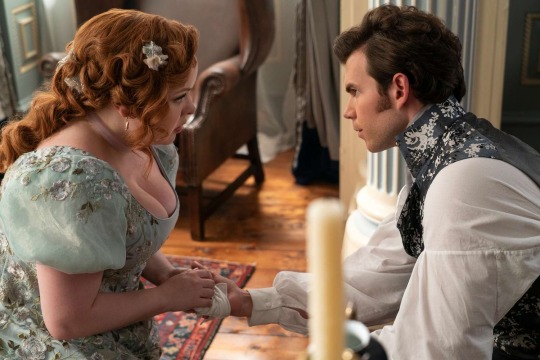
Typically, at this point in the tale, the husband would flee, but Colin stays. There is still another betrayal yet to come with the revelation of Penelope’s alter ego, however, so I would not be surprised if we yet saw Colin retreat from her in pain, even temporarily. Further, the betrayal typically happens as a result of the bride’s lack of faith in her husband, so Penelope will need to learn to fully trust Colin as well.
The Cupid and Psyche tale is of course explicitly referenced in the dance performed at the Queen’s ball. To the extent that the dance is a retelling, it seems to focus on the ending of the tale, when Cupid awakens Psyche from a deathlike sleep and then raises her to Olympus, where she becomes a goddess as well. This then is where we are headed: the revelation of Penelope’s secret may cause her to fall into a metaphorical death state (maybe the fainting scene in the trailer?), but Colin’s love will ultimately lift her up to her rightful place among the gods.
Another interesting feature in Apuleius’ story is a moment when Cupid’s mother Venus offers a reward for the capture of Psyche, in punishment for wounding her son:
“Ho, if anyone can produce in person, or give information as to the place of concealment of a certain runagate princess, a slave-girl of Venus, Psyche by name, let him hie to Mercury the crier at the rear of the Murtian Sanctuary, and receive by way of reward seven times a Kiss of Bliss and once a Kiss honeyed-beyond-measure by the interjection of her alluring tongue.”
Basically, Venus places a bounty on Psyche. And WHO in the Bridgerton cast has explicitly associated herself with Venus? None other than Queen Charlotte, whom we know from the Part 2 trailer will be offering a reward for the identification or capture of Lady Whistledown. In the tale, Venus plays the role of an avenging goddess who is enraged both by insults to her family and by romances that occur without her approval and orchestration. Once again, this sounds exactly like Queen Charlotte, so expect her to play that destructive goddess role throughout much of the season.
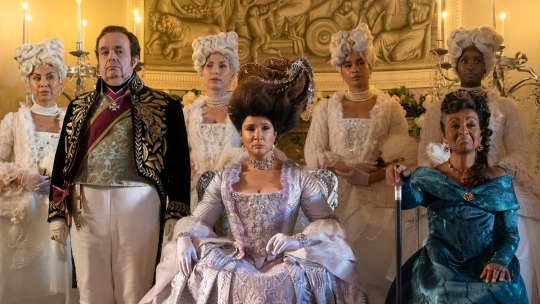
While animal husband tales focus on the revelation of the true man behind the beastly disguise, Cinderella tales center around the exposure of the true bride. A typical Cinderella story includes the following:
Persecuted heroine, usually by family
Help or helper, usually magic
Meeting the prince, usually with true identity disguised
Identification or penetration of disguise, usually by means of an object
Marriage to the prince
Throughout all three seasons of Bridgerton so far, we can clearly see Penelope being persecuted by her family, with her wicked mother and two foolish sisters easily fulfilling their quintessential roles.
As for the helper, Penelope has had several, but her most notable is Madame Delacroix, who both assists her caper as Lady Whistledown and then also supplies her with her transformative new wardrobe. In this way, she fulfills the role of the Fairy Godmother to Penelope’s Cinderella.

Meeting the prince of course is somewhat different since Colin and Penelope have known one another for years. Still, it is true that Penelope’s full identity has been disguised, since she has hidden her role as Lady Whistledown from him and the rest of the Ton.
Identification or penetration of the disguise has not occurred yet, in my opinion, but it likely will in Part 2 of Season 3. In the book, Colin follows Penelope and discovers her secret, and it may be that something similar occurs in the show. It’s unclear yet as to whether there may be an object involved, although if there is, I suspect it may be an issue of Whistledown itself, or perhaps the pen she uses to write it. Further, Eloise is heard in the trailer giving Penelope a midnight deadline to tell Colin the truth, just like how Cinderella's magical disguise will fall away at midnight.
And of course, we know we’re headed toward the eventual marriage with the prince! But meantime, there are a number of other familiar features of the Cinderella tale, not least of which are Penelope’s three separate flights from three balls. She runs first from Lady Danbury’s Four Seasons Ball, then again when her arrangement with Colin is revealed, and a final time after Debling turns her down. In some versions of the fairy tale, Cinderella actually does attend three different balls, fleeing from each one before midnight and only losing her slipper on the last one.
Of course, while she leaves behind no shoe, Colin races after Penelope each time, and finally catches her carriage on the last one, kneeling before her and confessing his feelings. This, like the relation to the mythical Cupid, leans on Hunter/Huntress motifs common throughout folklore. Often, one lover will chase after the other, and then they will trade places and the hunter will become the hunted. And only very rarely do these lovers come together as equals in the end.
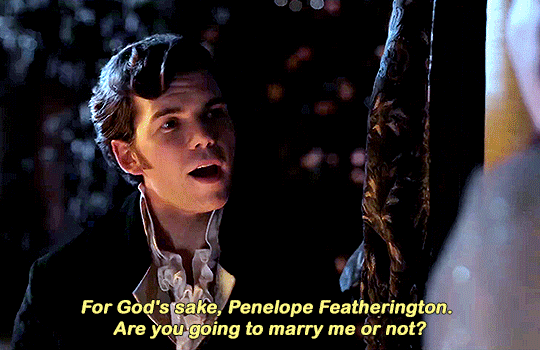
So I will end there for now! Cannot WAIT for Part 2, after which I will try to update this with any new observations!
#polin#bridgerton#bridgerton season 3#bridgerton meta#fairy tales#folk tales#mythology#eros & psyche#cupid & psyche#eros x psyche#cupid x psyche#cinderella#atu 425#atu 510#penelope featherington#colin bridgerton#queen charlotte#venus#penelope x colin#colin x penelope#regency romance
83 notes
·
View notes
Text

July 7th 1548 saw Treaty of Haddington, between France and Scotland, confirming the betrothal of Mary Queen of Scots and the French Dauphin (heir to the throne) François.
You could probably fill a post out every day with stories about her short life, she wasn’t yet six years old and this was the second treaty arranging her marriage, the first being The Treaty of Greenwich which was ultimately rejected by the Parliament of Scotland on 11 December 1543 and led to The Rough Wooing during which the English King sent his armies north to force us into marrying off our Queen Mary, it was George Gordon, Earl of Huntly who famously called it ‘the rough wooing.’stating….
“We liked not the manner of the wooing, and we could not stoop to being bullied into love.“
Mary of Guise, the Queen’s mother, turned to the Auld Alliance for help, dangling the carrot of her daughter’s hand for the French Dauphin, Francis, as a reward. On 7 July 1548, the Scottish parliament and the French ambassadors met at the besieged town of Haddington, fifteen miles from Edinburgh, to sign the treaty. Here is a full transcript of the treaty:
In the parliament of a most excellent princess Mary, queen of Scots, held at the abbey of Haddington on 7 July 1548, by one noble and mighty prince James [Hamilton], earl of Arran, lord Hamilton etc., and governor of the realm, and the three estates of the realm being present.
On the which day Monsieur [André de Montalembert, seigneur] d'Essé, lieutenant general of the navy and the army sent by [Henry II], the Most Christian King of France at this present time, showed how his master the King of France, having regard to the ancient league and confederation and amity existing between the realm of France and this country, and of the mortal wars, cruelties, depredations and intolerable injuries done by our old enemies of England against our sovereign lady, being of so tender an age, her realm and her lieges thereof during these diverse years, whereby the said Most Christian King, being moved through fraternal amity and confederation foresaid, could do no less but to aid, support, maintain and defend at his power this tender princess, her realm and her lieges as a propitious and helpful brother against all others who would attempt injury against the same, not by words but by way of deed, and to that effect has presently sent him in this realm with his navy and army of noble men with such directions as to put this realm to the old liberty, privilege and freedom and to recover all strengths, castles and fortalices out of our old enemy’s hands, with the advice, counsel and assistance of my lord governor and nobles of this realm, to their utter power and to expend their lives to that effect, and not only has he sent this army presently but also promises in his said master’s name at all necessary times to come to send and to have in garrison men of war, munition and money in this realm in such quantity that shall repress our said old enemies during the time of war and keep and defend this realm from them and all others in liberty and freedom according to his commission, obligation and promise given to him under the said Most Christian King’s great seals shown and produced in the face of parliament.
Therefore, having consideration of the matters stated above and how that the said Most Christian King has set his whole heart and mind for the defence of this realm, he desires in his said master’s name, for the more perfect union and indissolvable bond of perpetual amity, league and confederation, the marriage of our sovereign lady to the effect that the said Most Christian King’s eldest son [Francis Valois], dauphin of France may be joined in matrimony with her grace to the perpetual honour, pleasure and profit of both realms, observing and keeping this realm and the lieges thereof in the same freedom, liberties and laws as they have been in all the Kings of Scotland’s times past, and shall maintain and defend this realm and the lieges thereof as the same as he does for the realm of France and the lieges thereof according to his commission, promise and direction foresaid, produced as said is, and, therefore, desires my lord governor and the three estates of parliament to advise herewith and give their determination in this matter if the desire foresaid is reasonable and acceptable or not. [Mary of Guise], the queen’s grace, our sovereign lady’s most dear mother, being present, my lord governor and the three estates of parliament foresaid, all in one voice, have found and decreed and, by the judgement of parliament, concluded the desire of the said Monsieur D'Essé, lieutenant in the name of the said Most Christian King, his master, (Monsieur [Henri Cleutin, seigneur] D'Oisel, his ambassador, being present in the said parliament confirming the same) very reasonable and have granted that our said sovereign lady be married with the said Dauphin at her perfect age, and presently give their consent thereto, so that the said King of France keep, maintain and defend this realm, the lieges of the same, the liberties and the laws thereof as he does in his own realm of France and for the lieges of the same, and as this realm has been kept, maintained and defended by the noble kings of Scotland in times past according to the promise of the said lieutenant, special commissioner in the said cause, and that our sovereign lady be married to no other person but to the said Dauphin only.
My lord governor, in our sovereign lady’s name, ratifies and approves in this present parliament the determination and consent of the three estates of the same being present, concerning the marriage of our sovereign lady with the Dauphin of France according to the act of parliament made thereupon, providing always that the King of France, the said Dauphin’s dearest father, keep and defend this realm, the laws and the liberties thereof as his own realm, lieges and laws of the same, and has been kept in the times of all the kings of Scotland past, and to marry her to no other person but to the said Dauphin only.
And so it was, with her marriage agreement in place, five-year-old Mary was sent to France to spend the next thirteen years at the French court. The young Queen sailed with Mary from Dumbarton on 7 August 1548 and arrived a week or so later at Roscoff or Saint-Pol-de-Léon in Brittany.
If you ever get the chance go visit the John Gray Centre in Haddington, it houses all of the Council’s historical records and goes back centuries, it includes documents relating to King Robertthe Bruce from the year 1318, and numerous dating to Mary Queen of Scots reign. I was thrilled to inspect one such document signed by Queen Mary and Lord Darnley, reall hands on history, it's free todo this, you do get charged a fee if you want totake photos though.
17 notes
·
View notes
Note
Heyy! Hope you’re day is going well!☺️
F: Share a snippet from one of your favourite dialogue scenes you've written and explain why you're proud of it.
Hi! Thank you dear! It's going good so far! 💖
oooooooooh boooooyyyy, This was hard to answer! I had to do some digging, fr fr. 😅
But I found one! It's a bit long but I'm super proud of this dialogue. I pretty much just reenacted a scene from 'Monty Python and The Holy Grail' with Lady Dimitrescu and one of my demon OCs. It was 3 AM (as per usual) and I'd hit a wall on the series I was working on at the time. I had the movie playing in the background and the rest is history! It was a blast to write!
So here's an unprompted (mini)fic I guess?

Lady Dimitrescu opened her mouth to call the entity but stopped, narrowing her eyes as she studied its features. Even with its cute features, she wasn’t sure how to address it. Its face seemed both male and female. With a quick exhale she gathered her courage, calling out to the dark entity.
“Young man!” Alcina snipped as she gestured for the Hell-spawn to follow her.
“Woman.” The Hell creature responded curtly as they hurried to keep up with the lady.
Lady Dimitrescu blinked, taken aback. “What?”
“I’m a woman. Not a young man.” The demon corrected.
"Well, I can’t just call you ‘woman’.”
“You could just say ‘Xentia’.” The creature deadpanned.
“I didn’t know you were called Xentia. And while I am sorry I assumed you were a man, I couldn't give a damn what your name is.” Alcina shot back, quickening her pace. In spite of her escalating annoyance, she couldn’t help but laugh at the small demon struggling to keep up with her long strides.
This seemed to strike a nerve in the Hell-creature, their face scrunching up in annoyance.
“Well you didn’t exactly bother to find out, did you? And what’s more, I object to you automatically treating me like an inferior!” The infernal woman exclaimed defensively.
At this she scoffed, her rouge lips quirking into a dangerous half smile. “Well, I am the Countess of this village.”
“Oh, Countess, eh? - very nice. And how'd you get that, then? By exploiting the villagers! By hanging on to outdated imperialist dogma which perpetuates the economic and social differences in your society. If you flesh bags ever want to see any progress…” The demon’s words droned as they prattled on about god knows what. They went on for what seemed like an eternity as they made their way to Castle Dimitrescu and by the time the gates were visible a dull ache had begun to throb at Alcina’s temples.
“Be quiet! I order you to be quiet!" She snarled.
“Order, eh? Who does she think she is?”
Lady Dimitrescu hissed as anger continued to build within her. “I am the Countess!”
“Well, I didn’t vote for you.” The infernal woman said matter of factly.
“Y-You don’t vote for a Countess!” Alcina seethed. This creature really knew how to try her patience. It took the Countess every ounce of self control she had not to rip the woman’s throat out.
“Well how’d you become Countess then?” The demon questioned with an incredulous look.
Despite herself, the lady found the question amusing and her anger died down for the moment.
“If you must know, beast, my family ruled over this village for centuries, only having lost ownership at some point after I had left our family home. I returned years later to find our lands empty. It was then that Mother Miranda found me and bestowed upon me her gift. She implanted me with a Cadou, an entity of her own creation that holds unimaginable power. It infused with my flesh and made me into something beyond humanity, and with its power I was able to reclaim my family’s land. That is why I am Countess.” Lady Dimitrescu explained. She made sure to position her body in such a way so that she towered proudly over the demon woman.
“Listen, strange bird women distributing parasites is no basis for a system of government. Supreme executive power derives from a mandate from the masses! Not from some farcical implantation ceremony!” The demon argued back.
“Be quiet!” Lady Dimitrescu shot back as her anger began to reignite.
“But you can't expect to wield supreme executive power just 'cause some feathery tart threw a leech at you!” Xentia exclaimed with a dramatic arc of her arms.
“Shut up!”
“I mean, if I went 'round saying I was an emperor just because some avian bint had lobbed a tapeworm at me, they'd put me away!” The infernal creature laughed.
“Shut up, will you? Shut up!” Alcina roared. It seemed her patience and self control had run out, and before she could stop it, her hand shot out, lifting the vile creature by the arm and giving it an angry shake.
“Ah, now we see the violence inherent in the system!” The demon exclaimed as a cheeky grin spread across her face between shakes.
“Shut up !”
Xentia hollered as she was violently dragged away to the castle. “Oh! Come and see the violence inherent in the system! Help! Help! I'm being r e p r e s s e d !”
“Bloody peasant!” Lady Dimitrescu snarled as she wrapped her hands around the half-witted demon’s throat.
~***~
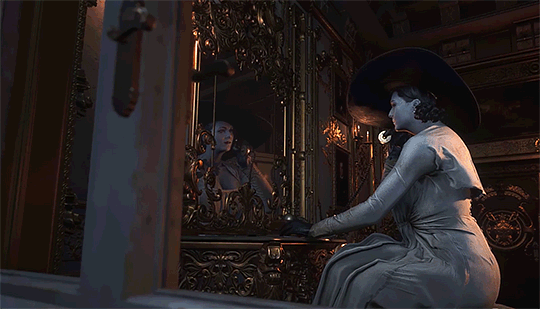
#ask game#ask me questions#unprompted#fan fiction#imma just drop this here#lady dimitrescu#resident evil village#monty python
20 notes
·
View notes
Note
can you please pray for a private intention? Thank you
Our Lady of Perpetual Help
O Mother of Perpetual Help, grant that I may ever invoke thy most powerful name, which is the safeguard of the living and the salvation of the dying. O Purest Mary, O Sweetest Mary, let thy name henceforth be ever on my lips. Delay not, O Blessed Lady, to help me whenever I call on thee, for, in all my needs, in all my temptations I shall never cease to call on thee, ever repeating thy sacred name, Mary, Mary.
O what consolation, what sweetness, what confidence, what emotion fill my soul when I pronounce thy sacred name, or even only think of thee. I thank God for having given thee, for my good, so sweet, so powerful, so lovely a name. But I will not be content with merely pronouncing thy name: let my love for thee prompt me ever to hail thee, Mother of Perpetual Help.
2 notes
·
View notes
Text

Our Lady of Perpetual Help
Feast day: June 27
Patroness of the Republic of Haiti and Almoradi, Spain
Our Lady of Perpetual Help, also known as Our Lady of Perpetual Succour and Our Mother of Perpetual Help is the title given to a 15th-century icon that originated in the Keras Kardiotissas Monastery and has been in Rome since 1499. Due to the promotion of the image by the Redemptorist Priests since 1865 many reproductions have been made and venerated.
Here is a list of the meaning of some of the elements of the icon:
• Mary’s eyes, filled with compassion and love, are directed toward us.
• Our Lady is clothed in the colors of virgins (red) and of mothers (blue). These are also royal colors.
• The star on Mary’s veil reminds us that she is the dawn announcing the coming of Christ.
• The Christ Child grasps his mother’s hand as though he is frightened by what he sees.
• In His hurry to reach his mother, Jesus has almost lost one of his sandals. He became human, like us, in all things but sin.
• On Our Lady’s left and right, we see the reasons for the child’s fear. On the right is the Archangel Gabriel, holding a cross and four nails. On the left is the Archangel Michael, holding a lance and a gall-sop of Christ’s Passion. This vision of the instruments of the crucifixion has driven the young Jesus to his mother’s protective embrace.
Prints, plaques & holy cards available for purchase here: (website)
80 notes
·
View notes
Note
Late to the party. Why don’t we like Tár?
Tár is the story of a female conductor who uses her position of power to take advantage of other, younger women in her orchestra.
The predatory lesbian is a common trope of old. I say 'of old', but the truth is it's been less than twenty, thirty years since its usage mostly disappeared from mainstream media.
"But Tár is meant to show that power has no gender." Yes, but they specifically chose a woman who likes women. A very specific, very harmful stereotype. "There are lesbians who sexually harass too." Yes, but we are still fighting the perception that that's more common than it actually is. We are still fighting the perception that being a lesbian automatically means wanting all women and openly lusting after them and disrespecting their boundaries. "Equality also means getting the same villainous roles." Yes, but there is no equality at the minute. How many mainstream lesbian-led movies were there this year? How many Oscar-contending lesbian-led movies have there been in recent years? And most importantly, how many women still get spooked out by finding someone they know is a lesbian and say poisonous shit like 'as long as she doesn't make a pass at me'? How many women/girls still start avoiding a friend because they found out she's a lesbian? There is no equality, there is no equity, there is just a general warming up to the idea of lesbians. And also, and just as importantly, how come you want to pin villainous roles on us when you haven't given any of all those other roles yet? We don't have almost any lesbians in common movie roles. We don't have lesbian superhero protagonist. We don't have lesbian John Wick/Jack Reacher/James Bond. The most lesbianism we had in Disney content until Willow was a two-second kiss in SW9, some gritty, vague couple in the tv show with the dude from Zero Rogue One (can't be bothered to look up the name), and a couple random ladies who hold hands (?) for two seconds in Finding Dory. We don't have lesbian mother who hunts the people who kidnapped her daughter. We don't have lesbian Crazy, Stupid, Love or lesbian Top Gun or lesbian gangster movies or lesbian Irish farmers living their best life or lesbian crime solving or lesbian political movie or lesbian Serious Movie™. Queer people in general are still mostly stuck with conversion therapy and coming out movies, and for lesbians in particular, the blue-filter, dirty-nails period pieces. There's a subset of teen romantic comedies showing up now, which is awesome, but it's still very indie-adjacent (I love indie movies, don't get me wrong, but I'm talking about the need for mainstream content, specifically). So no, the work is by no means done yet. Equality can't be an argument, because we have NOT been given equal roles. We are still at an era where our main character trait is being queer/a lesbian (one of the most satisfying series I watched recently in that regard was a French comedy called Détox (Netflix) where one of the two main characters is a lesbian but it's just presented as a fact of life and not a character trait, which I loved - even though the show itself is not great lol).
And then in comes Tár, where a lesbian's main character trait is being a sexual predator. Where a lesbian's character trait is the arguably most harmful stereotype associated with queer women. Delightful. When we start seeing regular characters in regular films and 'oh yeah, and they're queer', when sexuality becomes more of an afterthought in a character's trait map (sexuality is never an afterthought in real life, but we need that level of normalcy and acceptance and, yes, equality in the media to help effect positive change in the real world too), then we can have movies like Tár. Not right now, when it can still do so much damage.
TL;DR - Tár is a movie that reawakens, feeds into, and perpetuates the profoundly harmful stereotype of the predatory lesbian, at a time when general common sense is at its most brittle and bigots are eager to find new/more reasons to witch-hunt innocent people who just want to live their lives and be happy.
53 notes
·
View notes
Text

"...Surely she [Mary] must be the Mother of God if our Lord Jesus Christ is God, and she gave birth to him!" - #SaintCyrilofAlexandria #SaintoftheDay
📷 Our Lady of Perpetual Help Image from Slovakia / © sedmak / #GettyImages. #Catholic_Priest #CatholicPriestMedia
11 notes
·
View notes
Text

When the fullness of time had come, God sent his Son, born of a woman. (Gal 4:4)
1 note
·
View note
Text

Unlocked. By Courtney Milan.
Rating: 4.5/5 stars
Genre: historical romance, novella
Series: Turner #1.5
Summary: A perpetual wallflower destined for spinsterhood, Lady Elaine Warren is resigned to her position in society. So when Evan Carlton, the powerful, popular Earl of Westfeld, singles her out upon his return to England, she knows what it means. Her former tormenter is up to his old tricks, and she’s his intended victim. This time, though, the earl is going to discover that wallflowers can fight back.
Evan has come to regret his cruel, callow past. At first, he only wants to make up for past wrongs. But when Elaine throws his initial apology in his face, he finds himself wanting more. And this time, what torments him might be love…
***Full review below.***
Content Warnings: bullying, graphic sexual content
Overview: I somehow missed this novella by Courtney Milan, so I picked it up to help me over the reading slump caused by the previous book I read. And holy hell, was I not prepared for the raw emotion of this story. As with any Mukan book, bad behavior isn't overlooked too readily, which means that both hero and heroine have to grapple with their pasts in a way that game me a solid punch to the heart. So, for that reason, as well as my love for Milan's work in general, this novella gets 4.5 stars from me.
Writing: Milan's writing is more or less the same as her other works. There is a good balance of showing and telling, and the prose flows easily without feeling too bogged down with description. It's also simple and easy to get through without being too sparse, either.
This novella is also very appropriately paced. Too often, I've seen novellas try to fit in too much in too little a time frame, but the way Milan paced this book felt natural. It progressed at just the right speed, and at no point did I feel like Milan was rushing.
Plot: The non-romance plot of this book follows Evan Carlton, Earl of Westfeld, as he returns to England after a 10 year absence and comes to terms with how badly he hurt the woman he loves. At age 19, Evan fell in love with Lady Elaine, but he was too embarrassed to let anyone know, so he began making fun of her to anyone who would listen. As more and more of the ton got involved, including Evan's cousin, Lady Elaine became more and more of a wallflower, which in turn made Evan flee the country out of guilt. Now that he's back, his cousin wants to resume their old tricks, and Evan finds himself having to juggle his familial relationship and his quest for redemption.
What I liked most about this plot was that in no way was Milan trying to let Evan off the hook or make it seem like what he did was trivial. Milan writes Lady Elaine as profoundly affected by past (and continued) bullying, and doesn't let Evan's romantic feelings serve as an excuse.
As a result, a lot of this book was very emotional, with characters not only revealing the depths of their hurt and remorse, but also the capacity for atonement and forgiveness. It made for an incredibly compelling story - one that I could scarely pit down because I was so moved by the chatacters' struggles. In particular, I was very moved by Lady Elaine's relationship with her mother as well as Evan's mountaineering story.
Characters: Elaine, our heroine, is incredibly sympathetic as the victim of a decade of bullying, but she is so much more admirable because she doesn't allow it to cow her. Elaine spends a lot of time steeling herself against the barbs and turning each situation into a moment of defiance; as a result, she was not a passive victim, yet neither was she unaffected. Her protrctiveness over her mother was also emotional and moving, and I loved that Elaine had a lot of complex emotions related to her experience as the butt of society's jokes.
Evan, our hero, is fairly interesting in that Milan doesn't let him off the hook too easily. As part of his redemption arc, Evan has to do a lot of self-reflection, and I found it to be convincing. I also liked that Evan had complex feelings regarding his cousin, Diana. Evan and Diana are very close, but Diana is Elaine's chief tormenter. I liked seeing how Evan stood up for Elaine while also trying to salvage his relationship with Diana; it made the whole mess more interesting.
Diana, Evan's cousin, was not just a one-sided villain. Though she acts as Elaine's bully throughout the whole novella, she also has some sympathetic qualities, like being afraid of being "eaten alive" by the ton and being extremely loyal to her cousin. I especially liked that Diana had an arc of her own, and while it wasn't as full or complete as the protagonists', it was just the right amount so as not to be distracting.
TL;DR: Unlocked is an emotionally devastating novella about the harm of bullying and the potential for redemption. With complex characters, including a heroine that is neither too passive nor too forgiving, this book puts in the work to show how one may earn forgiveness while also showcasing the effects bullying has on a victim.
Romance: The romance between Elaine and Evan was incredibly emotional. Because Elaine is so raw from years of bullying, every interaction felt intimate and passionate, and Milan knew just how to balance individual character growth and their love story.
I very much appreciated the fact that Milan doesn't make excuses for Evan and doesn't let Elain forgive him too quickly. I also liked that Elaine wasn't written as someone who moved on when she realized she wanted to be with Evan; even when she feels herself falling for him, she has to learn to trust him, and Milan doesn't write her as suddenly healed after ten years of abuse and less than one year of healing.
The only thing I didn't find to my taste was Evan's obsession with Elaine's bosom. Maybe this is personal preference, but I'm frankly kind of exasperated with male romance heroes who fixate on boobs. I don't know why - maybe because real life straight men are so insufferable about them. I just get pulled right out of a story when a romance hero can't get enough breast.
5 notes
·
View notes
Text
Churchgoers in Belfast have heard a member of the faithful ask for divine intervention to stop England winning the European Championships.
The petition to the Blessed Virgin Mary was made on Thursday on the final day of the Novena at Clonard Monastery in the west of the city.
The annual religious event sees prayers and petitions offered to Our Lady of Perpetual Help over nine days.
At the 6.45am Mass on Thursday, churchgoers chuckled as visiting Spanish priest Father Carlos Diego Gutierrez read out the unusual petition.
“Dear Mother of Perpetual Help — and this is a funny last one, but very serious too,” said Fr Gutierrez, a Redemptorist of the Province of Southern Europe.
“Put England out of the Euros. We are still getting 1966. Please, you would never hear the end of it. A loving daughter with a sense of humour. P.S. I have been praying to [Padre] Pio as well.”
After reading the petition, Fr Gutierrez added: “Well, we pray also for Spain to win the Euros.”
continue reading
That's terrible! She should have specifically petitioned for England to get to the final, only to have their hopes and dreams shattered in the inevitable penalty shootout.
1 note
·
View note
Text
My magical Seder above the rooftops of Beirut
Zaki Elia cherishes his memories of celebrating the Passover Seder in Lebanon in the 1950s. He wrote this account forty years later in London, where he resettled. Today no Jewish community exists in Beirut. (With thanks: Michelle)

Beirut by night (photo: Paul Saad, Wikimedia Commons)
The time is the mid-Fifties. Abou Jacques and Um Jacques (literally the Father and Mother of Jacques) held the Seder for the whole family. This included us: we were related through the marriage of their elder son Jacques to my Auntie Touné, my father’s favourite sister.
The Seder was on a grand scale and catered for six to seven families. The preparations for it started one month in advance. All the mothers used to go to Um Jacques in a rota of two at a time in order to help prepare the meal.
During that season the Gentiles with their spring cleaning were as busy as the Jews with their Pessah cleaning. In the street we used to live in, Persian carpets were being beaten on the balconies by Kurdish cleaning ladies in zingy dresses. The more beatings reverberated in the streets the closer we came to Pessah. There was a definite sense of ascending hysteria. I was young, and to me it looked epic in scale.
The weather this time of the year was crisp and scrubbed. The last whiffs of orange blossom mingled with the pungent smells of the Med and the many gallons of cleaning fluid.
On the day of The Seder the whole world seemed as good as new.
Dusk settled with the arrival of Uncle Jacques in his shiny black Buick with its polished chromium plated nick-knacks. The effect of an American car in the narrow streets of Beirut was breathtaking. We all glided into the Buick in a cloud of starched cleanliness and Eau de Cologne.
My father always held the cumbersome bouquet of gladioli. Uncle Jacques drove us to his parents’ flat barely three minutes away, but the ride seemed pure magic. The experience of the car was transcendental.
Abou Jacques and Um Jacques lived in the penthouse flat of a 40s building with the monumental feel of a Parisian facade. A heavy modernist wrought iron and glass portal led into a hall with a stupendous mirror on the left and a smaller one on the right. Two steps up and you reached the landing: a lift was inserted in the stairwell of a sweeping, wide staircase climbing all the way up to the fifth floor. Everything was clad in tasteful local marble. Lifts were not common in Beirut of the 50s. The ascenseur’s metal door was imposing, with a vertical slit-like window in its centre, and crowned with a brass plaque depicting in intaglio the world map, overlaid with the brand name of the lift ‘O.T.I.S.’. we fell under its magic spell, that would propel us upward to some heavenly place.
We had to ascend in two batches.
First my mother, my sister and uncle got in the cabin and were heaved up, taking with them the shaft of light that was cast onto the landing. My father, the gladioli and I waited in semi-darkness while watching, in awe, their progress upward. Their arrival was heralded by the light flooding the top floor landing and followed by a gush of ‘Ahlan Wasahlan’ and ‘Hag Sameiah’ that trickled and echoed down the stairwell. That was Um Jacques’ voice. On our arrival, my dad, the gladioli and I were received with the same generous glee.
Um Jacques was a lovely coquettish old lady with a tight and immaculate perm. She always wore little gold earrings mounted with a string of tiny pearls. Whenever she giggled and laughed her gold tooth glinted with happiness. Her dresses were perfectly tailored in summery colours and flowery patterns according to the latest Parisian fashions. She loved wearing the heavy jangling gold bracelet that Abou Jacques gave her a long time ago. Everybody loved her.
Abou Jacques also had a gold tooth, shyly set behind a generous but stiff moustache. He had white hair and was soft spoken with a perpetual expression of contentment and humility. His amber worry beads never left his hands.
The flat was awash with aunts, uncles and cousins of various ages and sizes, greeting and complimenting each other profusely. The crystal chandeliers were ablaze in the two rooms where the Seder table was set straight across both spaces. It was huge. Four white tablecloths were needed to cover the full length.
While the last preparations were being made, my cousins and I would go out onto the terrace to scrutinize the shimmering glitter of the city and spot the lights of the famous seaside hotels: Hotel Excelsior, Palm Beach, St. Georges, Residence, The Normandy. Each one was identified and greeted loudly. We looked upon Beirut as travellers do when taking off or leaving port. Indeed, the terrace felt just like a ship’s deck at night with the same sort of breezy stillness, and muted rumble of departure.
The night was queen. Our eyes were filled with cascading stars and neon lights. From the darkness of the terrace the Seder table spanning both rooms could be seen through three French windows, bursting with so much light, that the walls containing it seemed to dissolve into night. Within this radiant cocoon the Seder table displayed its splendid vanities: Damascene brass work, Bohemian crystals, Louis XVI silver tableware and china crockery festooned the table in balletic rhythms.
As we all settled around the table Abou Jacques would hush us down in order to start the journey from darkest Mitzrayim. We children were more interested in the Haroseth. We read through the Haggadah looking at the pictures, singing the songs, spilling the wine, and cursing the Egyptians; we did not understand much but felt it all the same. Slavery, miracles and redemption mingled in our heads, but the Haroseth was best.
Before the meal started, most of the mothers disappeared into the kitchen led by Um Jacques, and reappeared laden with an abundance of different entrées, beautifully served on an array of big, boat-shaped plates.
All the men were proud, and contented. Compliments were rushing up and down the table. ‘May Peace be upon your hand!’ ‘May we have such feasts at the weddings of your children!’ The meal proceeded noisily with all fathers exchanging jokes and laughter. The profusion of flowers displayed on the sideboard shimmered and quivered to the sound of silver cutlery and joyful eating.
After we consumed the first course, Um Jacques would disappear again into her kitchen while the ladies cleared the table. With the help of one of her daughters-in-law, Um Jacques would reappear with the main course. On a massive silver vessel with big brass handles was enthroned a whole stuffed lamb bedecked with a garland of red flowers round its neck and a young lettuce in its mouth. Its eye sockets were emptied. Everybody applauded. It was awesome and gruesome, delightful and fearful. The epicentre of the meal shifted from Abou Jacques’s to Um Jacques’s end of the table. She unpicked the sown-up belly to release the stuffing of rice and pistachio nuts, and the fragrance of spices would rush out into the room on its way to heaven. ‘Ya Allah!’
Following this mythical meal the Haggadah was read and sung into the small hours of the morning. My cousins and I would grow restive and escape onto the terrace to watch the city. Little did we know what was brewing behind all that glitter. That was 1957. In 1958 the first inkling of trouble surfaced, and Jews began wanting to leave. Half awake and half dreaming of Eliahu Hanavi, our Seder ebbed away gently on the laps of our parents.
My younger sister and I would wake up the next morning not quite understanding how we got in our beds. The first day of Pessah was usually sunny blue with some whiter-than- white clouds and a fresh clean breeze. We made the walk to Synagogue all starched-up and sharp. The soles of our slightly painful new shoes were stiff; they slithered on the grimy cobbles and made us feel above worldly things. We felt new…
The Synagogue was brimming with billowing tallitim that revealed silk ties and crisp suits.
Hanging from the ceiling, above the ark, the crowded row of chiseled brass and silver oil lamps were sparkling with polished newness. Whiffs of burning oil, ‘Old Spice’, old prayer books, and bergamot Eau de Cologne mingled and swirled around. Raucous and out-of-tune singing often drowned the vocal arabesques of the Hazan. I used to watch with wonder as his face turned sweaty and red, and his jugular vein swell over his rigid collar as he reached his top notes.
At the end of the service, the open air forecourt of the Synagogue swarmed with all the ‘Messieurs et Mesdames’, uncles and aunts, the grannies, the grandpas, the cousins, the friends – all in a riot of taffeta, lace, nylon and rayon, silk flower corsages, gold and fake jewellery, fezzes, stilettos and shiny shoes. It was peacock time!
Soon after, the crowd would part again for the traditional Pessah Ziarat or visits. The Ziarat were a sort of communal walk-about, punctuated by well-wishing stopovers at all the friends and relations’ homes. Mothers and older daughters tended to the visitors; fathers and younger children did the visiting. The first two days of Pessah were open days for all.
The Jewish community fanned out for just half a mile around ‘Wadi Abou Jamil’, the local Jewish Lower East Side.
My father used to lead us patiently through the intricate web of walkways, steps and courtyards that rambled in and out of the main street, up dingy stairs to this friend, down stone-covered paths to that cousin. We were served salted nuts, mulberry or fruit syrup drinks and all sorts of almond and coconut sweetmeats. Everywhere we visited was neat, spanking clean and adorned with scented flowers.
Outside, in the clear spring sunlight, everybody moved around at a gentle pace (the new shoes began taking their toll) . Fathers waved to each other from across the street. The whole city resonated with warm greetings and farewells: ‘May we see you again in days of happiness!’
Thirty-eight years later, the Beirut Jews scattered across the globe in the successive waves of Middle Eastern convulsions.
16 notes
·
View notes